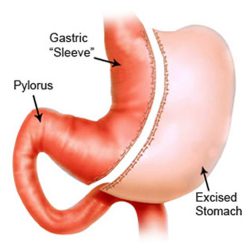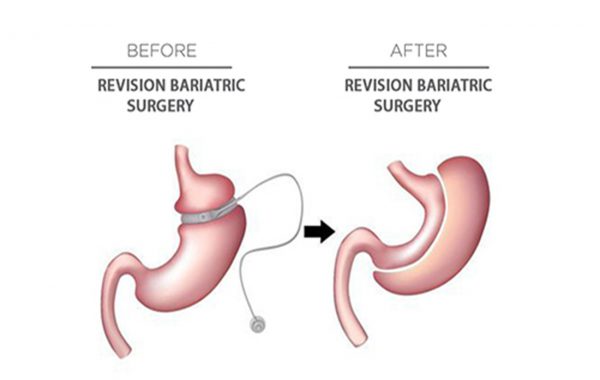Various Bariatric Surgeries

Laparoscopic Single Incision Sleeve Gastrectomy
Laparoscopic sleeve gastrectomy is an emerging bariatric procedure, Single incision sleeve gastrectomy surgery involves less pain and little or no scarring. Since there is no need to cut through the stomach muscle, recovery time is significantly shorter, while the cosmetic results are amazing. Most patients have no visible scars after this surgery.

Laparoscopic Sleeve Gastrectomy
Sleeve gastrectomy, or gastric sleeve, is a surgical weight-loss procedure in which the stomach is reduced to about 15% of its original size, by surgical removal of a large portion of the stomach, following the major curve. The open edges are then attached together (typically with surgical staples, sutures, or both) to leave the stomach shaped more like a tube, or a sleeve, with a banana shape. The procedure permanently reduces the size of the stomach. The procedure is performed laparoscopically. Most patients can expect to loose 85 to 90 % of their excess body weight over a 6–12 month period with the sleeve gastrectomy alone.
Advantages

Laparoscopic Roux N Y Gastric Bypass
Surgical procedure in which the stomach is divided into a small upper pouch and a much larger lower “remnant” pouch and then the small intestine is rearranged to connect to both. Weight loss of 80% to 90% of excess body weight is typical of most large series of gastric bypass operations reported. The medically more significant effects include a dramatic reduction in comorbid conditions
Advantages

Laparoscopic Mini Gastric Bypass
A mini gastric bypass creates a long narrow tube of the stomach along its right border (the lesser curvature). A loop of the small gut is brought up and hooked to this tube at about 1.5 to 2 metres from the start of the intestine. The mini-gastric bypass was developed to reduce operating time, simplify the procedure and reduce complications
Advantages

Revisional Bariatric Surgery
People who have already gone through any form of Bariatric Surgery and did not successfully lose the weight or had complications,
revisional bariatric surgery will be a great option from you.
Revisional weight loss surgery is a procedure to help solve the problems associated with weight loss surgery
The most reason for revision weight loss surgery is unhappy after the initial weight loss surgical procedure

Laparoscopic Proximal Jejunal Bypass With Sleeve
It is a new procedure to treat obesity and type 2 diabetes. In this procedure first laparoscopic sleeve Gastrectomy is done. After that jejunum (a part of small intestine) is divided 50 cm from the ligament of treitz. 200-300cm of proximal jejunum is bypassed and end to side jejunojejunostomy is done.
Advantages

Laparoscopic Duodenojejunal Bypass
With Sleeve For Bmi 25 To 30 With Diabetes
Duodenojejunal bypass (DJB) is a novel metabolic surgery based on foregut hypothesis. Duodenojejunal bypass as a standalone procedure has been reported for treating diabetes in non-obese subjects. Sleeve gastrectomy is combined for obese subjects.
Advantages

Gastric Balloon Procedure For Class 1 Obesity
Gastric Balloon may offer a minimally invasive and valuable method for managing obesity and related conditions. It is used to achieve weight loss in obese people, generally those with a body mass index (BMI) > 35 kg/m2, or 30 kg/m2 with certain comorbidities.
